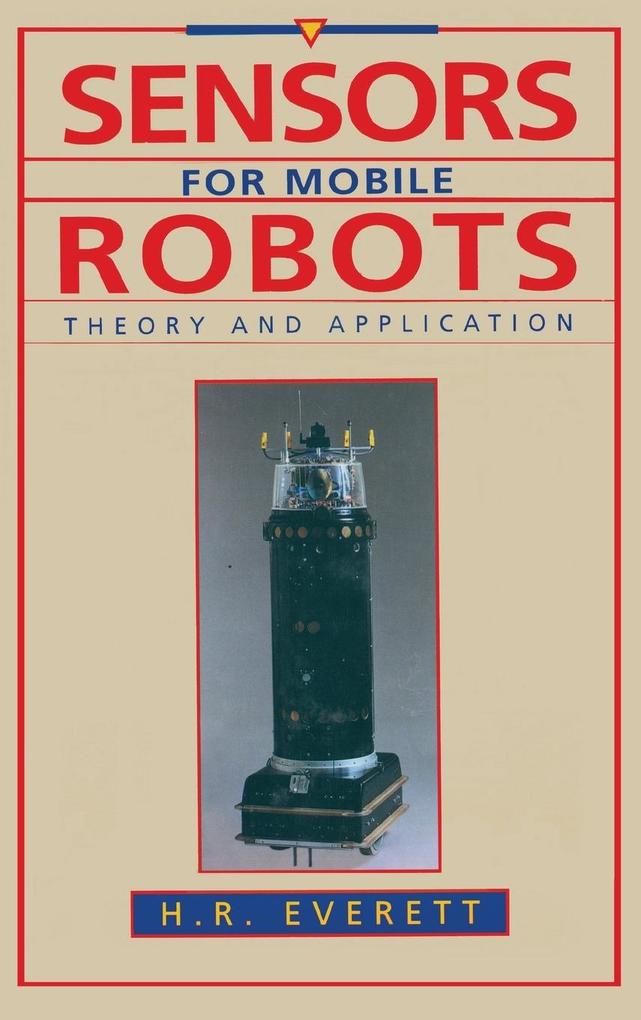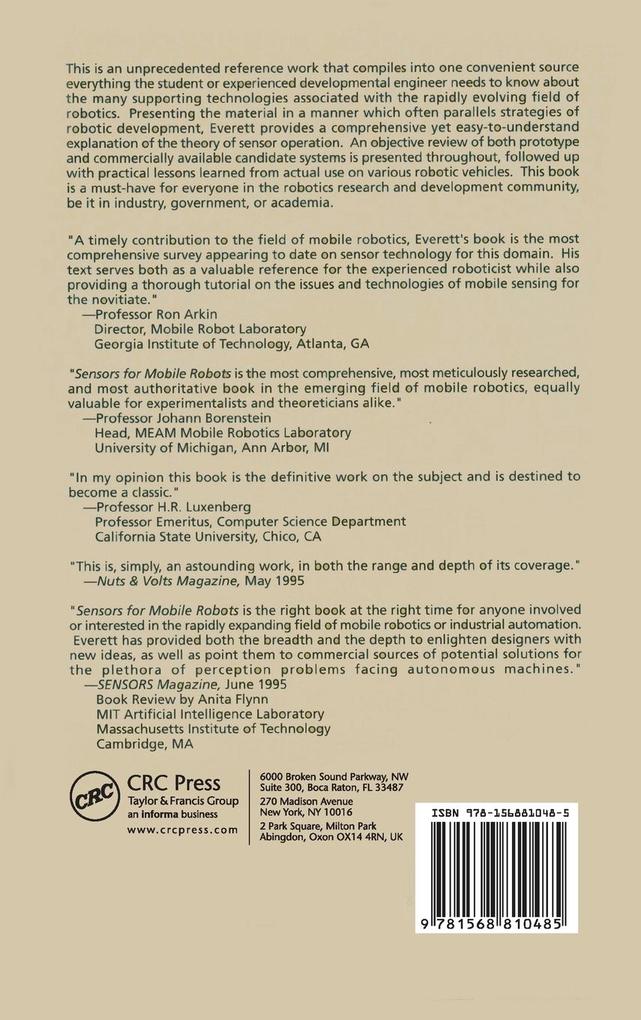
Zustellung: Sa, 09.08. - Mi, 13.08.
Versand in 7 Tagen
VersandkostenfreiThe author compiles everything a student or experienced developmental engineer needs to know about the supporting technologies associated with the rapidly evolving field of robotics.
From the table of contents: Design Considerations * Dead Reckoning * Odometry Sensors * Doppler and Inertial Navigation * Typical Mobility Configurations * Tactile and Proximity Sensing * Triangulation Ranging * Stereo Disparity * Active Triangulation * Active Stereoscopic * Hermies * Structured Light * Known Target Size * Time of Flight * Phase-Shift Measurement * Frequency Modulation * Interferometry * Range from Focus * Return Signal Intensity * Acoustical Energy * Electromagnetic Energy * Optical Energy * Microwave Radar * Collision Avoidance * Guidepath Following * Position-Location Systems * Ultrasonic and Optical Position-Location Systems * Wall, Doorway, andCeiling Referencing * Application-Specific Mission Sensors
From the table of contents: Design Considerations * Dead Reckoning * Odometry Sensors * Doppler and Inertial Navigation * Typical Mobility Configurations * Tactile and Proximity Sensing * Triangulation Ranging * Stereo Disparity * Active Triangulation * Active Stereoscopic * Hermies * Structured Light * Known Target Size * Time of Flight * Phase-Shift Measurement * Frequency Modulation * Interferometry * Range from Focus * Return Signal Intensity * Acoustical Energy * Electromagnetic Energy * Optical Energy * Microwave Radar * Collision Avoidance * Guidepath Following * Position-Location Systems * Ultrasonic and Optical Position-Location Systems * Wall, Doorway, andCeiling Referencing * Application-Specific Mission Sensors
Inhaltsverzeichnis
FOREWORD, PREFACE, ACKNOWLEDGMENTS, 1: INTRODUCTION, 2: DEAD RECKONING, 3: TACTILE AND PROXIMITY SENSING, 4: TRIANGULATION RANGING, 5: TIME OF FLIGHT, 6: PHASE-SHIFT MEASUREMENT AND FREQUENCY MODULATION, 7: OTHER RANGING TECHNIQUES, 8: ACOUSTICAL ENERGY, 9: ELECTROMAGNETIC ENERGY, 10: COLLISION AVOIDANCE, 11: GUIDEPATH FOLLOWING, 12: MAGNETIC COMPASSES, 13: GYROSCOPES, 14: RF POSITION-LOCATION SYSTEMS, 15: ULTRASONIC AND OPTICAL POSITION-LOCATION SYSTEMS, 16: WALL, DOORWAY, AND CEILING REFERENCING, 17: APPLICATION-SPECIFIC MISSION SENSORS, APPENDIX, INDEX
Produktdetails
Erscheinungsdatum
15. Juli 1995
Sprache
englisch
Untertitel
Sprache: Englisch.
Seitenanzahl
544
Autor/Autorin
H. R. Everett
Verlag/Hersteller
Produktart
gebunden
Gewicht
929 g
Größe (L/B/H)
235/157/34 mm
ISBN
9781568810485
Entdecken Sie mehr
Bewertungen
0 Bewertungen
Es wurden noch keine Bewertungen abgegeben. Schreiben Sie die erste Bewertung zu "Sensors for Mobile Robots" und helfen Sie damit anderen bei der Kaufentscheidung.









